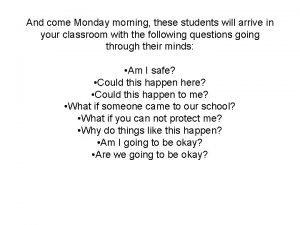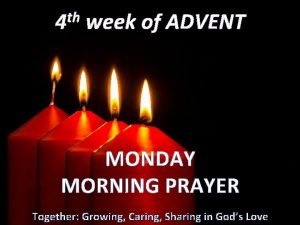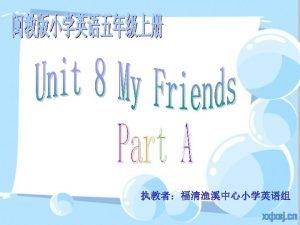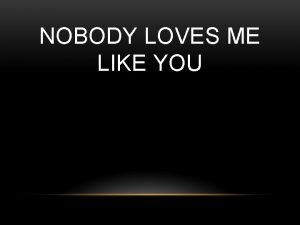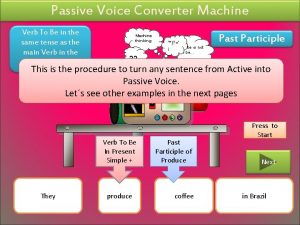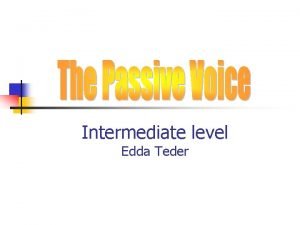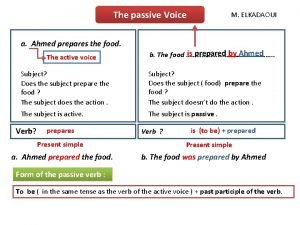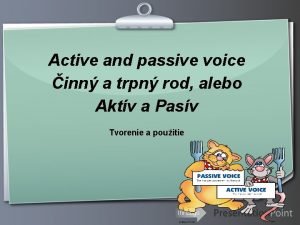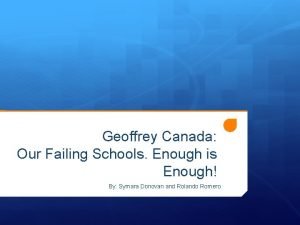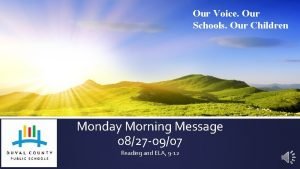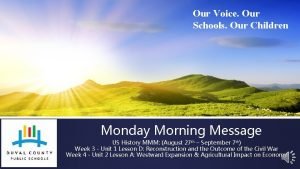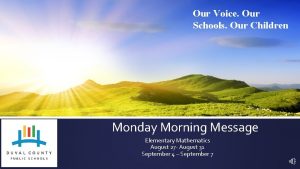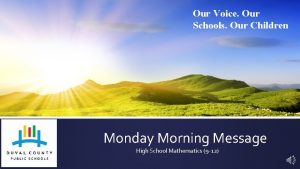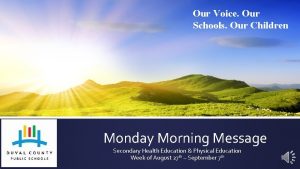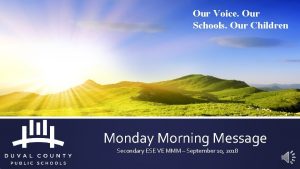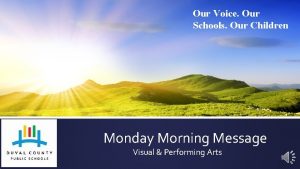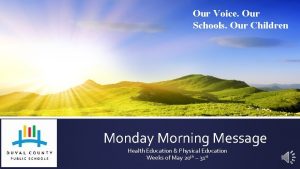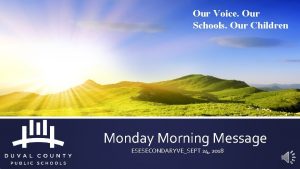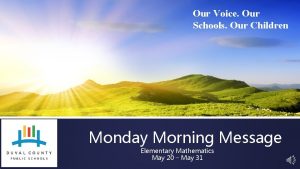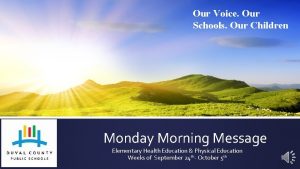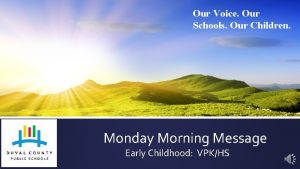Our Voice Our Schools Our Children Monday Morning




















- Slides: 20

Our Voice. Our Schools. Our Children Monday Morning Message US History MMM: (September 10 th – September 21 st) Week 5 - Unit 2 Lesson B: Social, Political, and Economic Aspects of the Second Industrial Revolution Week 6 - Unit 2 Lesson C: Social Reform & Labor

September 10 th – September 21 st 2018 Matt Campese Executive Director Campese. M@duvalschools. org Ti. Lena Robinson Specialist (High School) washingtot 2@duvalsch ools. org 904 -390 -2925 La. Shawna Campbell Specialist (Middle School) irbyl 1@duvalschools. org

Standards Unit 2 Lesson B: SS. 912. A. 3. 2: Examine the social, political, and economic causes, course, and consequences of the Second Industrial Revolution that began in the late 19 th century. SS. 912. A. 3. 3: Compare the First and Second Industrial Revolutions in the United States. Test Item Remarks/Examples: May include, but are not limited to, trade and development of new industries. SS. 912. A. 3. 4: Determine how the development of steel, oil, transportation, communication, and business practices affected the United States economy. Test Item Remarks/Examples: May include, but are not limited to, railroads, the telegraph, pools, holding companies, trusts, corporations, how developments in industry contributed to westward expansion, expansion of trade and development of new industries, vertical and horizontal integration. SS. 912. A. 3. 5: Identify significant inventors of the Industrial Revolution, including African Americans and women. Test Item Remarks/Examples: May include, but are not limited to, Lewis Howard Latimer, Jan E. Matzeliger, Sarah E. Goode, Granville T. Woods, Alexander Graham Bell, Thomas Edison, George Pullman, Henry Ford, Orville and Wilbur Wright, Elijah

Standards Unit 2 Lesson C: SS. 912. A. 3. 8: Examine the importance of social change and reform in the late 19 th and early 20 th centuries (class system, migration from farms to cities, Social Gospel movement, role of settlement houses and churches in providing services to the poor). SS. 912. A. 3. 9: Examine cause, course, and consequences of the labor movement in the late 19 th and early 20 th centuries. Test Item Remarks/Examples: May include, but are not limited to, unions, Knights of Labor, American Federation of Labor, Socialist Party, labor laws. SS. 912. A. 3. 10: Review different economic and philosophic ideologies. Test Item Remarks/Examples: May include, but are not limited to, market economy, mixed economy, planned economy and philosophic examples are capitalism, socialism, communism, anarchy.

Objectives Unit 2 Lesson B 2 class periods Students will: • Analyze how the development industries affected business practices and the United States during the late 1800 s. • Identify multicultural inventors of the Industrial Revolution. • Analyze the effects of the Second Industrial Revolution on American Society. Unit 2 Lesson C 2 class periods • Compare reform movements of the late 19 th and early 20 th centuries and explain how they shaped American society. • Evaluate the causes and effects of the early labor movements. • Identify reasons for labor organizations lack of success. • Identify different economic and philosophic ideologies that developed in response to industrialization.

Focus Unit 2 Lesson B: Understand how the social, political, and economic aspects of the Second Industrial Revolution impacted American society. Specifically, how the development of industries affected business practices and the economy during the 1800 s and how multicultural inventors changed the functionality of American households and industrial capabilities. Unit 2 Lesson C: Understand the causes and effects of labor and reform movements and how they impacted American society. Resources: ▪ Textbook: Florida United States History & Geography, Modern Times; Mc. Graw Hill (2013): Chapter 3, Lesson 1 (pages 92 - 95) Chapter 3, Lesson 2 (pages 96 – 99) Chapter 3, Lesson 3 (pages 100 – 103) Chapter 3, Lesson 4 (pages 104 – 109) ▪ Gateway to U. S. History (Jarrett and Yahng, 2014) Chapter 4: The Triumph of Industry (pages 59 – 75)

Content Focus Breakdown

Content Focus Breakdown

Content Focus Breakdown

Content Focus Breakdown

Content Focus Breakdown

Content Focus Breakdown New Topic

Content Focus Breakdown New Topic

Gradual Release After the bell ringer, as best practices for the “I Do”: The teacher identifies the factors that led to the Second Industrial Revolution in the United States via guided notes and explain how each of the factors contributed to America’s economic growth. resources natural Unit 2 Lesson B population free enterprise First Industrial Revolution patents contracts Civil War

Gradual Release e W “ ” Do For the “We Do, ” the teacher and students read and identify details from the text that describe how the spread of railroads impacted America’s Second Industrial Revolution. Students then work collaboratively to identify details about the impact of the other developments listed in the chart and record the information in their charts. Independently (“You Do”) students will use the information from their notes to respond to the following question: How did the Second Industrial Revolution transform American society socially, politically, and economically? Th “ ey D o”

What Administrators Should See ▪ Students engaged in meaningful tasks and are taking ownership of their learning. ▪ Best practices in the US History classroom would include the appropriate pacing for the Gradual Release Model as well as the consistent use of student collaborative tasks, student discourse, and the critical alignment to our Standards and Test Item Specifications on a daily basis.

Common Misconceptions Students may believe: ▪ American companies were owned by a few individuals. Although several large trusts did operate some vital industries, many businesses were independent and driven by competition. ▪ all wealthy industrialists were robber barons. ▪ labor unions and businesses worked together willingly and peacefully but this was not always the case.

Professional Learning Opportunities ▪ U. S. History Social Studies Meeting, Tuesday, October 30, 2018. ▪ Time: 7: 30 am – 2: 30 pm ▪ Location: Ed White High School (Houston Hall)

American Founders’ Month and Celebrate Freedom Week ▪ Section (s. ) 683. 1455, Florida Statutes (F. S. ), designates the month of September as American Founders’ Month and s. 1003. 421, F. S. , recognizes the last full week of classes in September in public schools as Celebrate Freedom Week. ▪ Celebrate Freedom Week must include at least three hours of an in-depth study of the intent, meaning and importance of the Declaration of Independence. ▪ Lessons and activities for American Founders’ Month and Celebrate Freedom week will be implemented in grades K – 5, middle school Law Studies & Civics and high school Law Studies, APUSH, & US Government (standard, honors and AP) classes. ▪ In accordance with s. 1003. 421, F. S. , at the beginning of each school day, or in homeroom, during the last full week of September, public school principals and teachers shall conduct an oral recitation by students of the following words of the Declaration of Independence: “We hold these truths to be self-evident, that all men are created equal, that they are endowed by their Creator with certain unalienable rights, that among these are life, liberty and the pursuit of happiness. That to secure these rights, governments are instituted among men, deriving their just powers from the consent of the governed. ” ▪ Please visit https: //dcps. duvalschools. org/Page/25221 to view the full memorandum, resources, and lessons.

If everyone is moving forward together, then success takes care of itself Have a Great Week! For More Information Contact Matt Campese, Executive Director Closing Message Ti. Lena Robinson, Specialist (High School) La. Shawna Campbell, Specialist (Middle School) - Henry Ford
 Come monday morning
Come monday morning Good morning happy monday december
Good morning happy monday december Monday morning prayer
Monday morning prayer Safety target and reach schools
Safety target and reach schools Huntsville city school powerschool
Huntsville city school powerschool International place value
International place value Brother john lyrics
Brother john lyrics Responses good morning
Responses good morning Good morning teacher
Good morning teacher Good afternoon students
Good afternoon students No one loves me
No one loves me Speech good morning everyone
Speech good morning everyone Teacher:good morning class
Teacher:good morning class Good morning nice to see you
Good morning nice to see you Passive voice converter
Passive voice converter Passive will
Passive will Verb to be in passive voice
Verb to be in passive voice Voice change example
Voice change example Pola passive voice
Pola passive voice Passive cvičenia
Passive cvičenia Our failing schools enough is enough
Our failing schools enough is enough
